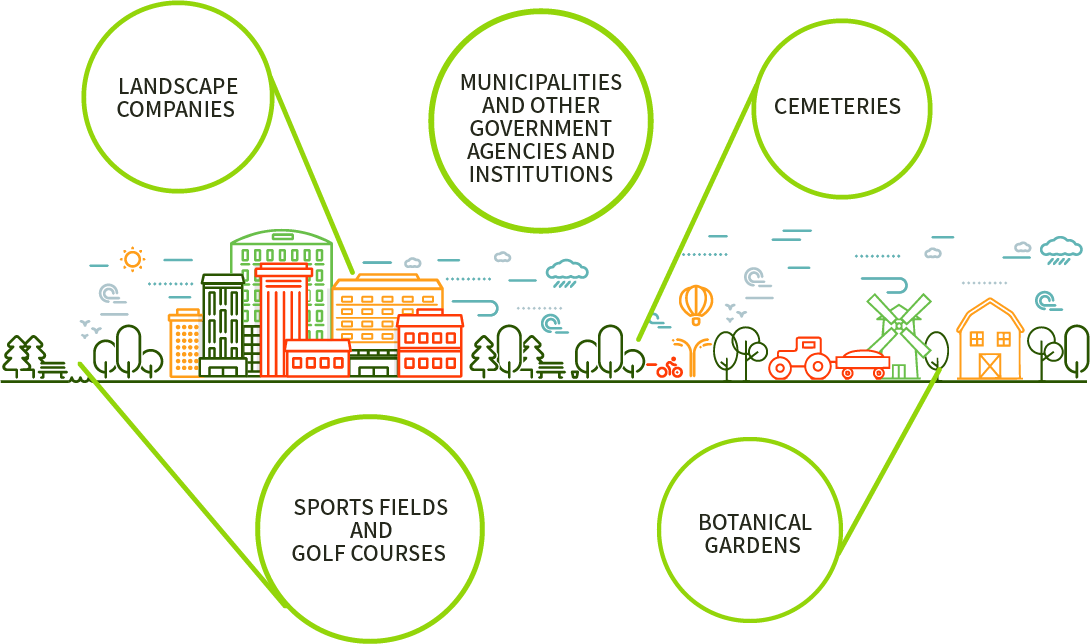
MANAGER IN LANDSCAPING
A manager in landscaping is responsible for managing several crews and crew leaders on many different projects. Managers in landscaping are experienced professionals who have worked in landscaping or horticulture for many years. Managers are usually responsible for ensuring crew members and crew leaders are properly trained on the equipment used and are the go-to person when there is a problem on site that a crew leader cannot resolve. In Ontario, where the climate is seasonal, managers in landscaping can also be responsible for managing snow maintenance crews in the winter months. Some managers in landscaping can have formal education and training in landscaping or horticulture, though that is not always necessary, as many managers have obtained their managerial positions by advancing from entry level positions. Managers in landscaping are equal parts skilled landscapers and project managers.

LANDSCAPE SUPERVISOR, GROUNDSKEEPING SUPERVISOR, GROUNDS MAINTENANCE MANAGER, PROJECT SUPERVISOR
Managers in landscaping play an important role in landscape design, construction, and grounds maintenance. In general, they:
- Organize the planting and establishment of softscapes such as trees, gardens, lawns, shrubs, hedges, and turf
- Organize and coordinate the activities of workers who build and install outdoor spaces and construct hard landscaping features, such as paths, patios, decks, outdoor living spaces and accessories, pergolas, gazebos, pools, and hot tubs
- Plan and estimate the materials and labour requirements for individual contracts
- Resolve work-related problems, prepare and submit progress and other reports
- Order supplies and materials
- Establish work schedules and procedures and coordinate activities with other work crews
- Hire and manage staff and oversee training
- Maintain records on stock, finances, and personnel
Managers in landscaping are mainly employed by landscaping companies. Managers in landscaping can also be employed by:

Managers in landscaping are knowledgeable and skilled professionals with years of experience in their field. Similar to other professions in landscaping, managers may have started out their careers as landscape and grounds maintenance labourers and gained enough experience to move into a leadership position as a manager. A manager in landscaping may be the highest position at some landscaping firms, aside from business owners. For managers in landscaping looking to advance their careers, some start their own companies or work as consultants.
Future employment prospects for managers in landscaping in Ontario are positive. In 2020, there were over 460 job postings for managers in landscaping and other landscape and horticulture supervisors across the province.
In Ontario, the median annual wage for a Manager In Landscaping is $56,160. Pending experience, responsibilities, location, hours of work, and qualifications a Manager In Landscaping can expect to make between $34,486 and $72,800.


![]()

Work Context
Communicate via telephone
Face-to-face discussions
Responsible for the health and safety of others
Work Attributes
Integrity
Dependability
Attention to detail
Leadership
Initative
HOW DO I BECOME A MANAGER IN LANDSCAPING?
To become a manager in landscaping, some people will begin as landscaping labourers and later acquire additional training and experiences to become a foreperson or crew leader. After gaining the necessary skills and knowledge, an experienced foreperson or crew leader can move into a management role, if that is of interest to them. Managerial roles in landscaping involve leading teams, ordering materials, and liaising with customers and clients. Many employers consider it an asset for managers to have educational experience in horticulture or landscape maintenance. Some employers may require managers to have industry-specific certifications, depending on the work being done.
Many Ontario colleges and universities offer landscape and horticulture programs, which will give you a solid foundation in landscape and horticulture knowledge and expertise that is an asset many employers look for in managers in landscaping.
Examples of in-school training can include, but is not limited to:
- Plant science, botany and plant identification
- Plant material and plant-handling techniques
- Plant propagation techniques and plant production
- Turf grass management
- Landscape construction
- Pest management
- Landscape equipment maintenance
- Irrigation (components, pipe layout and spray rates)
- Site layout, and grading and drainage
- Workplace communication and applied trade mathematics
- Applied safety procedures and first aid
- Health and safety
- Project management
HOW DO I BECOME A CERTIFIED MANAGER IN LANDSCAPING?
It is possible for individuals to obtain certification through industry associations, such as the Canadian Nursery Landscape Association’s Certified Landscape Horticulture Manager program.

